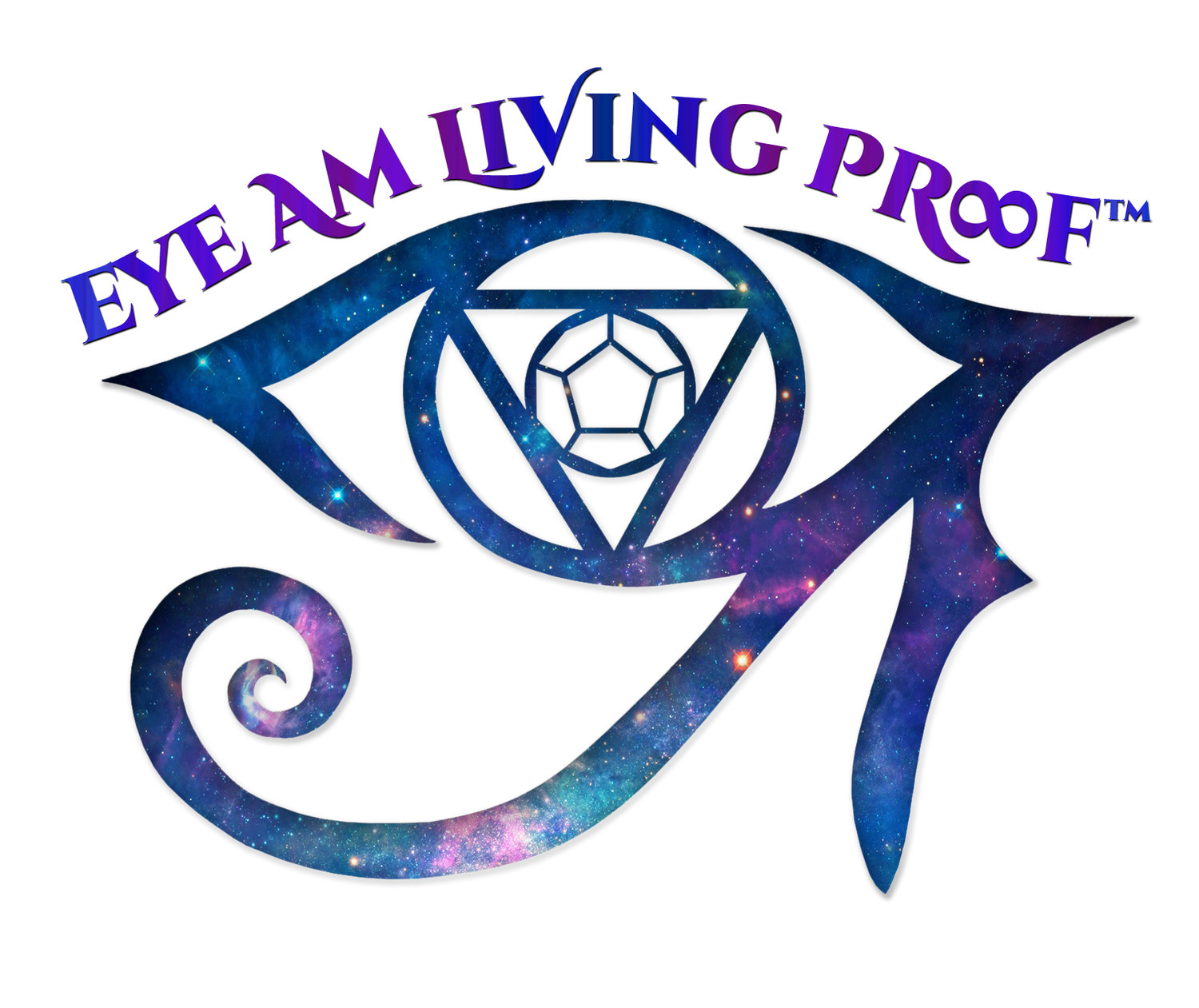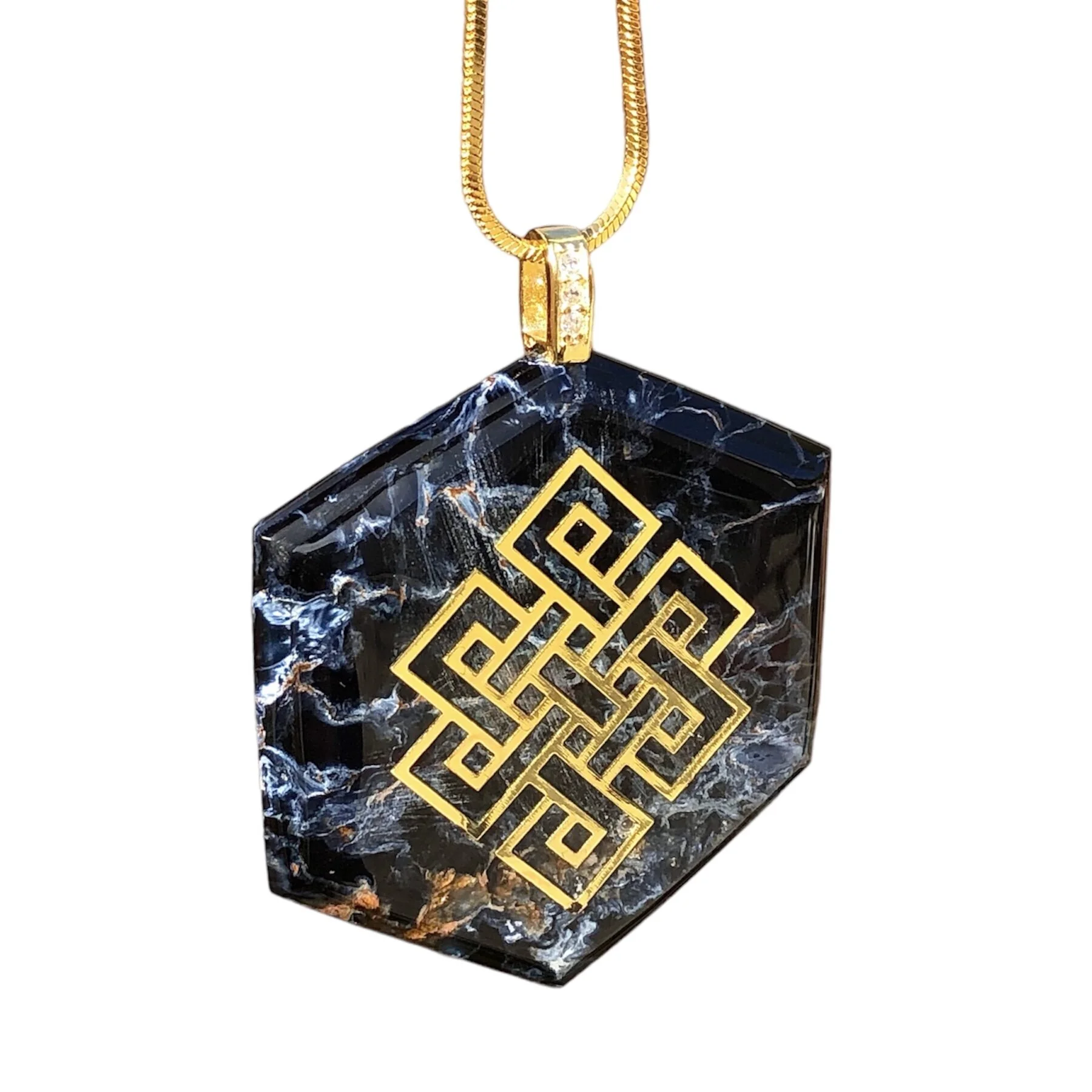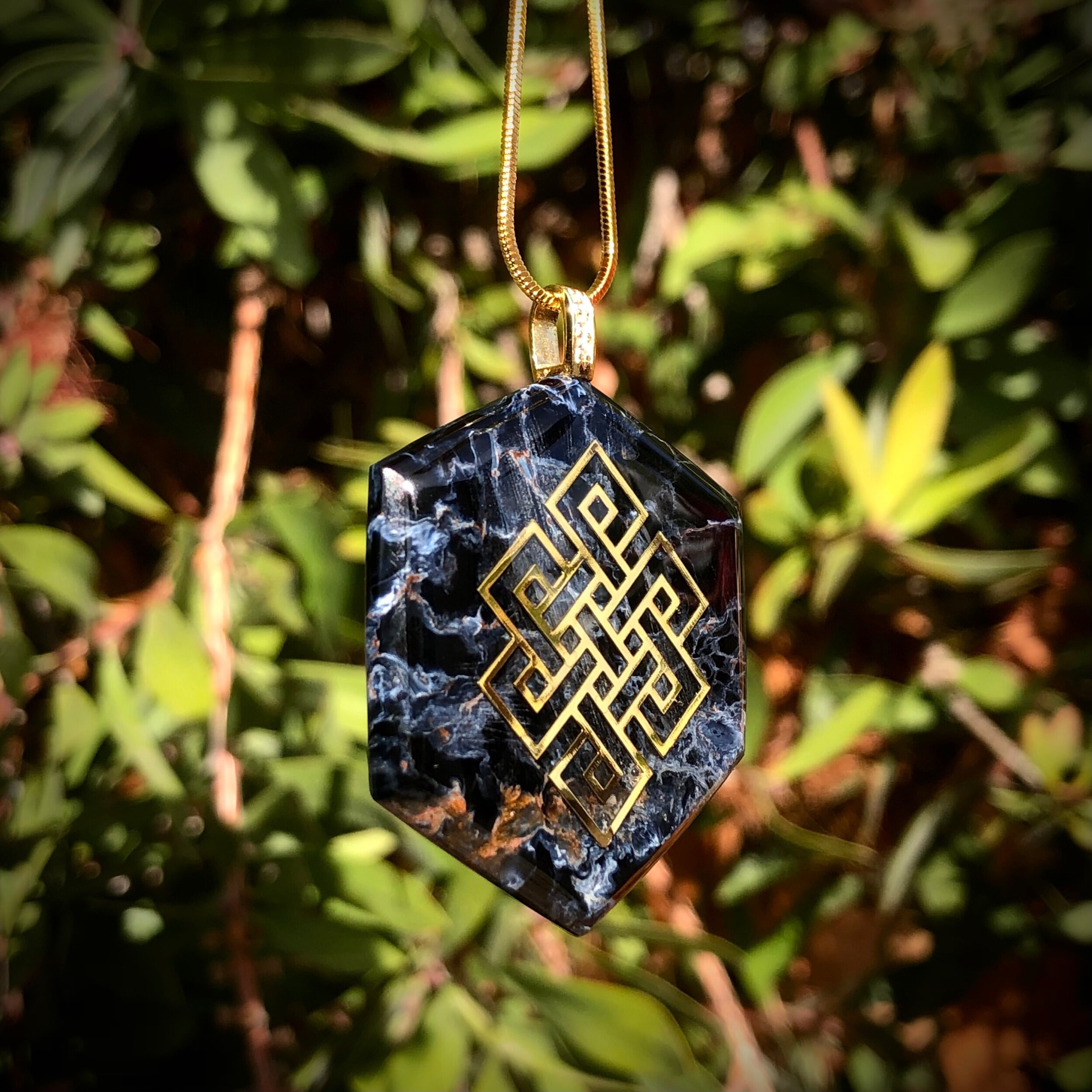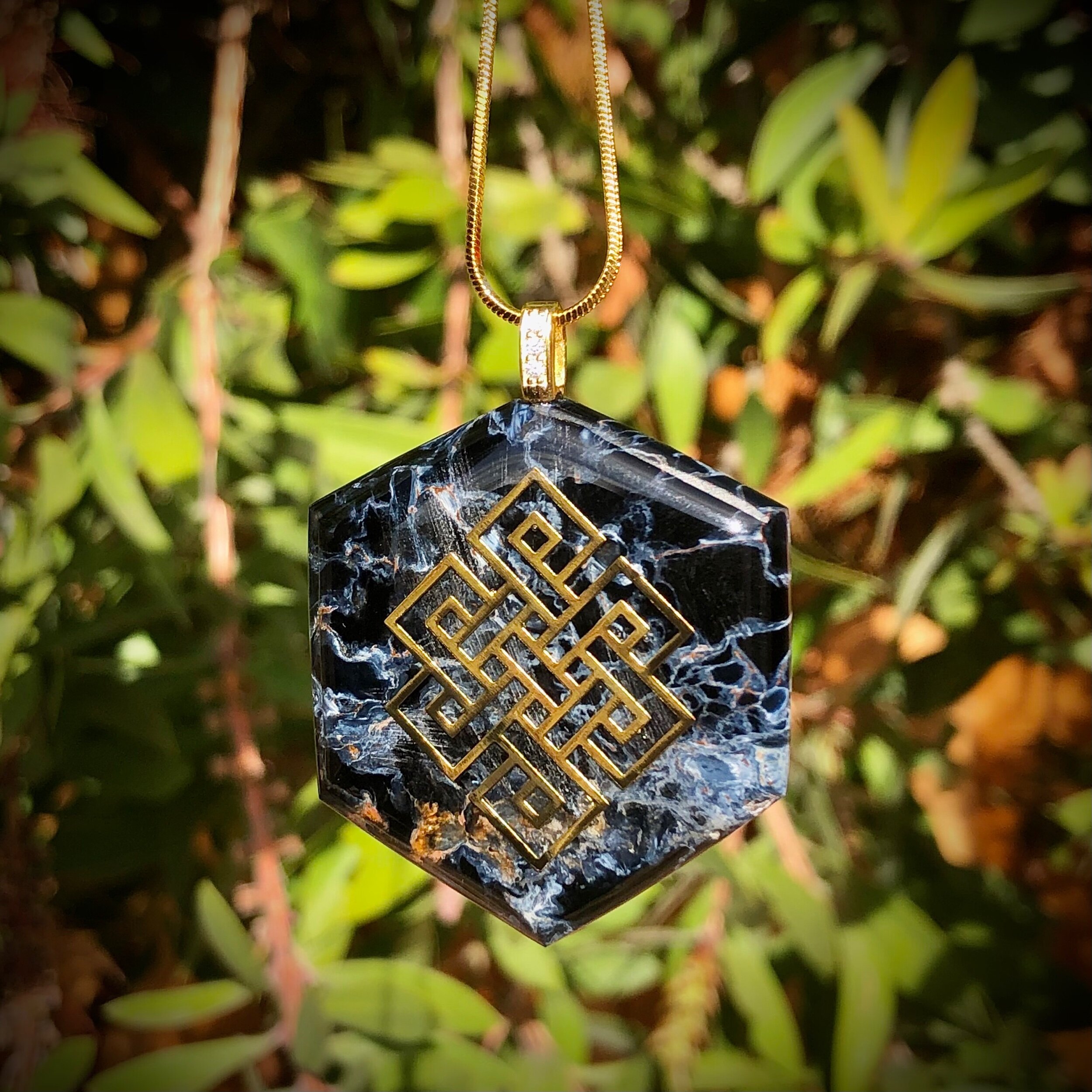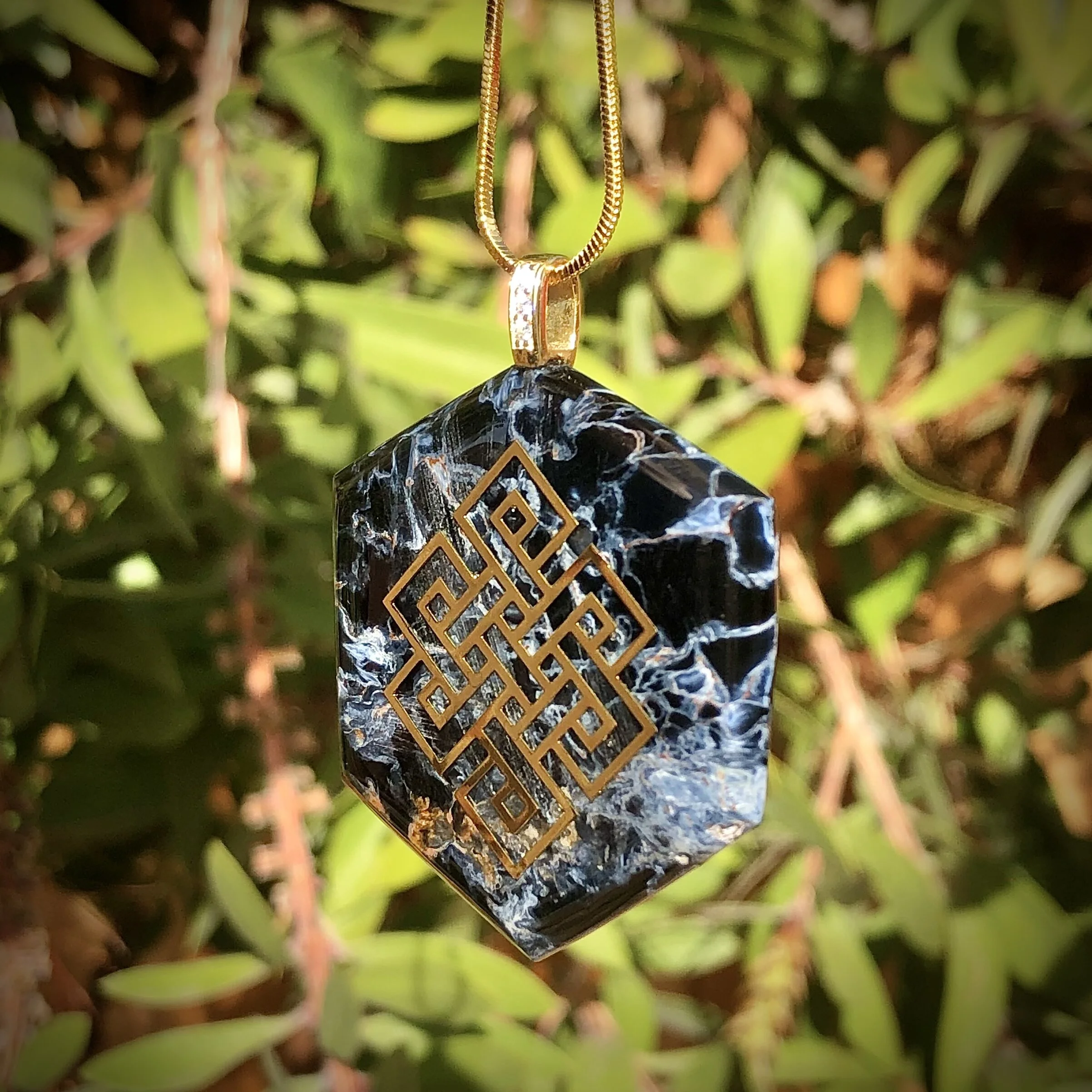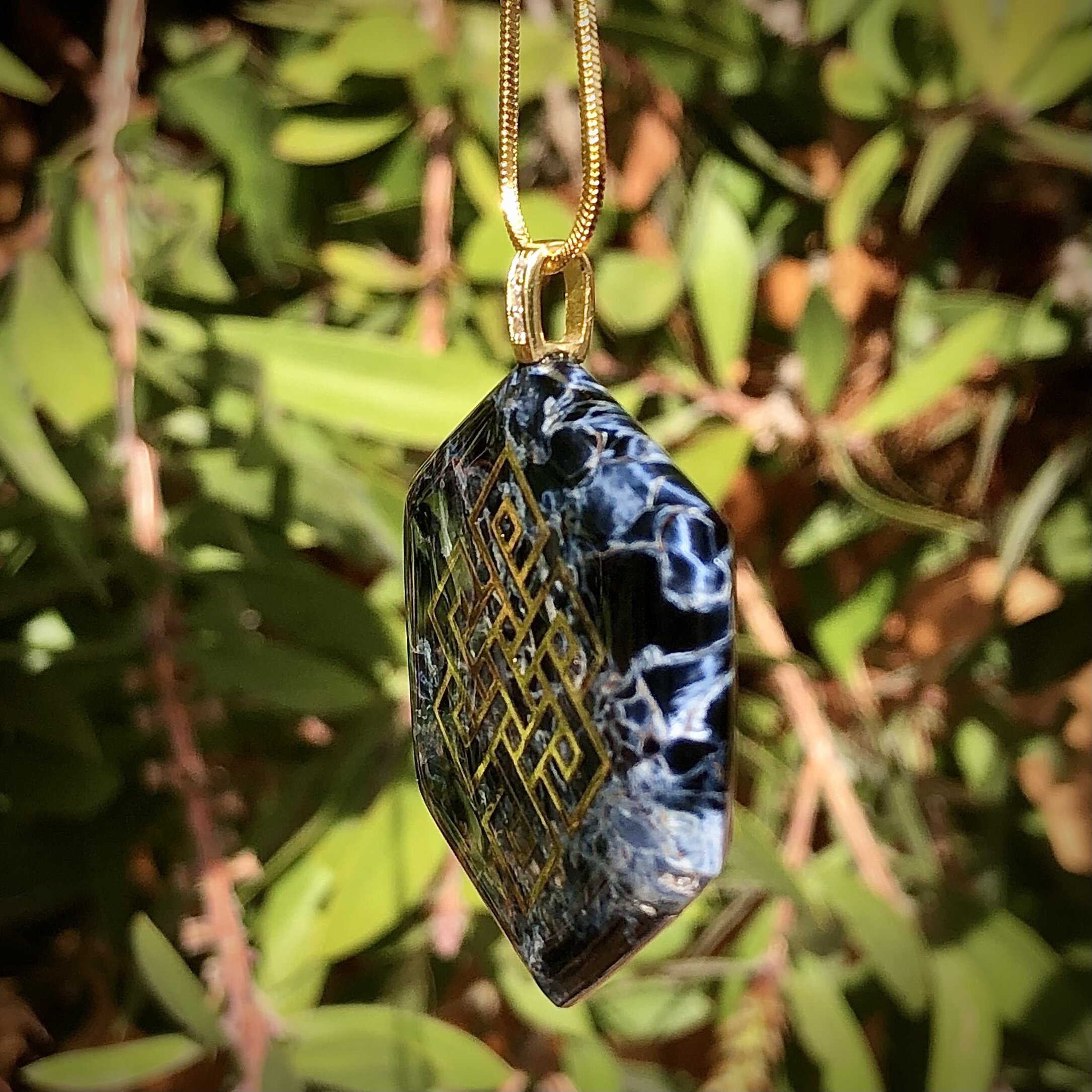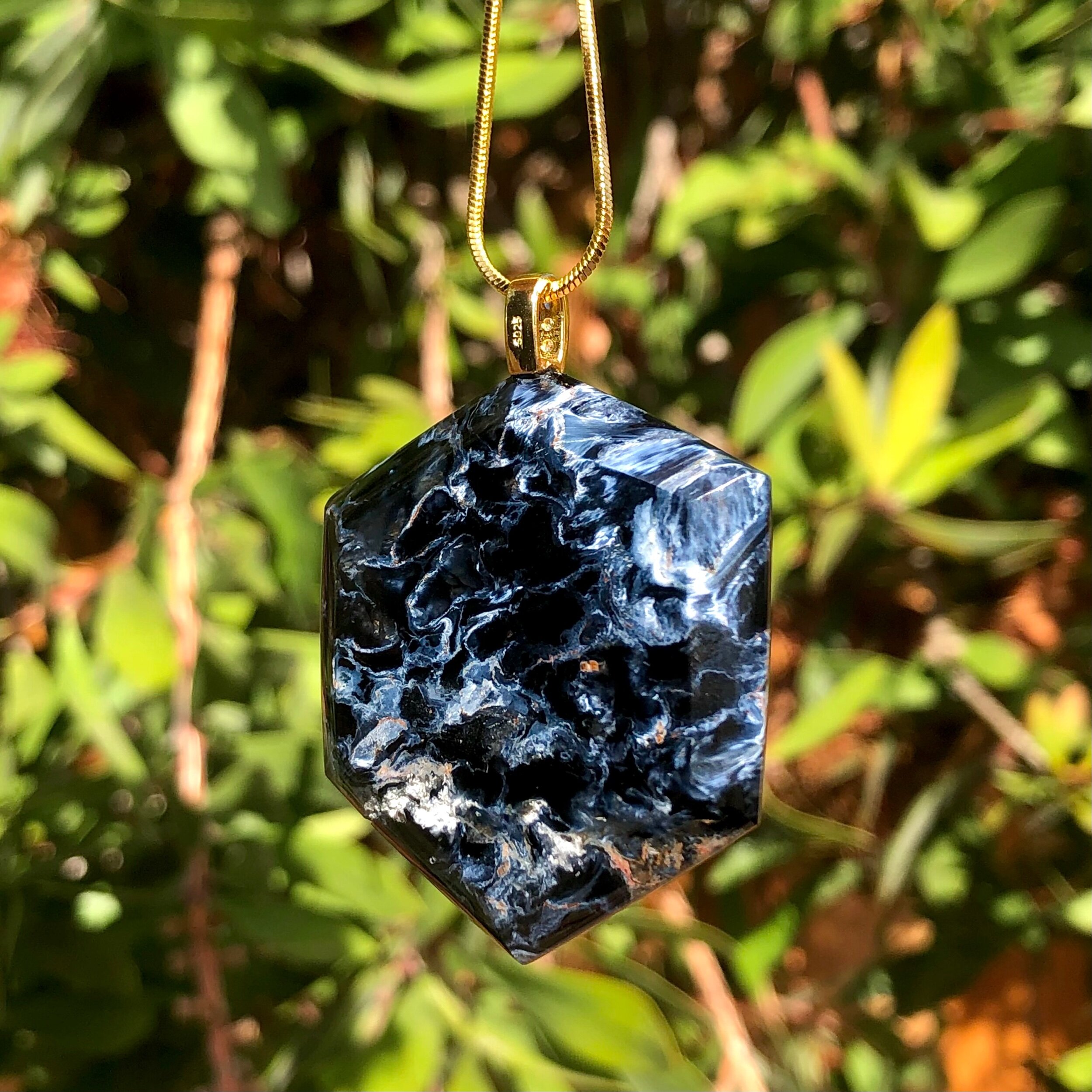Hexagonal Pietersite Endless Knot [Eye Am Infinitely Connected]
Hexagonal Pietersite Endless Knot [Eye Am Infinitely Connected]
Pendant Size: 1-1/2”
Crystal: Pietersite
Crystal Meaning:
Pietersite is a variety of Quartz, composed naturally of Tiger's Eye, Hawk's Eye and Jasper, and is characterized by an incredible chatoyancy and brilliance of life within the stone.
Pietersite is said to center on the spiritual being with the ability to ground an individual to the etheric body--the first or lowest layer in the "human energy field" or aura. Pietersite discharges negative energies and emotional turmoil while cleansing the aura, restoring it to calm.
Pietersite unites the third eye and the solar plexus chakra which is the seat of the will, by bringing high vibration energy from the higher realms in via the third eye chakra. This stimulates you to be willing to do what you need to do to achieve change in your life.
Symbol Meaning:
The Endless Knot is a closed and symbolic ornament with entangled and right-angled lines that overlap without showing the beginning or end, just like the cycle of life itself. It's a symbol of birth, death, and rebirth. It also represents the interconnection of all things. It represents the cause and effect of our actions as interconnected beings, which is the concept of karma. It shows the karmic cycle that continues eternally until there is complete spiritual liberation. The symbol may also have the interpretation of the interaction of opposing forces in a dualistic manifestation world.
The endless knot is also called the infinity knot, eternal knot, mystic knot, lucky knot, and glorious knot. It is one of the eight auspicious symbols of Tibetan Buddhism, a set of symbols that represent good fortune.
The endless knot is also a symbol of wisdom because it has no beginning or end, just like the infinite knowledge of the Buddha. It's also a symbol of the connection between wisdom and compassion. Just like the knot, these two are also interwoven and inseparable.
The endless knot is an ancient symbol that has been used in various cultures for centuries. Its precise origins are unknown, but it's believed to appear on clay tablets from the Indus Valley Civilization. It dates back to 2500 BC. From there, it spread to Tibet and China where it was adopted by Buddhism. Now, the eternal knot is often seen in Buddhist art and architecture. It also appears in Celtic artwork. It can be found on the stages of Tibetan temples.
